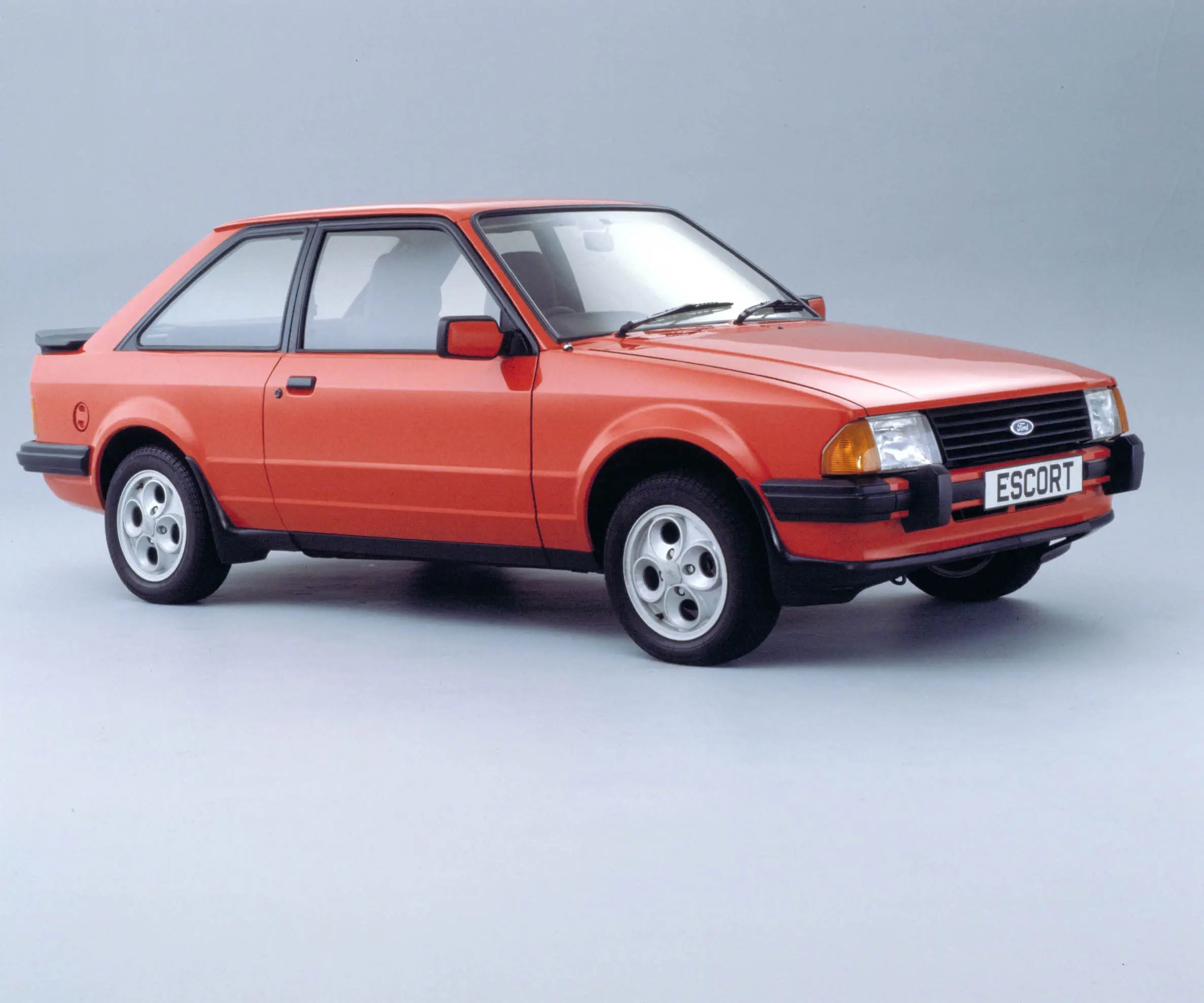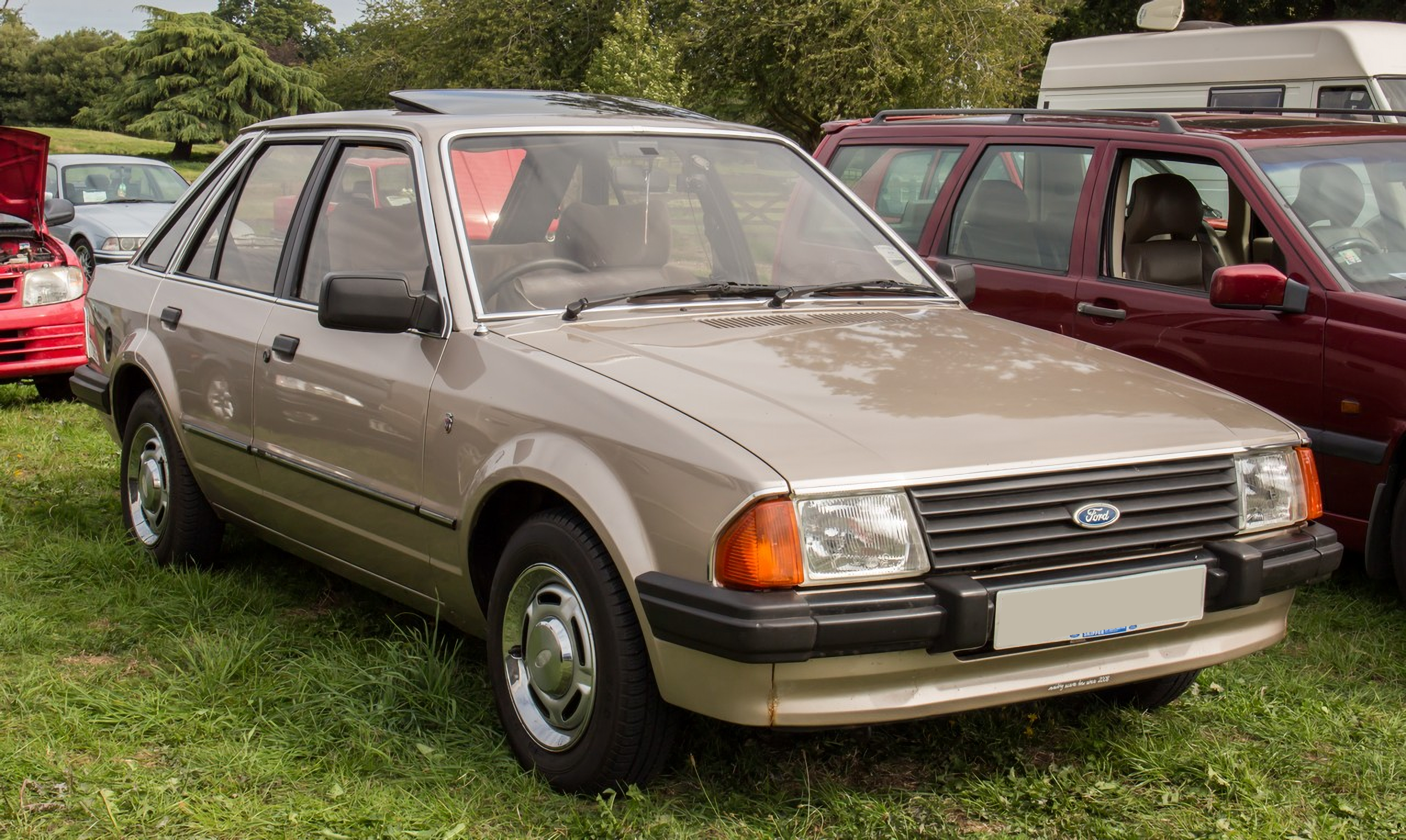Nostalgia on wheels: why the Ford Escort Mk3 should be your next classic
27 February 2023
Ford of Europe’s first front-wheel-drive Escort was a sales chart phenomenon that you can still afford to run and enjoy in 2023
It can’t have escaped your attention that the Eighties is back in fashion. As Stranger Things looms large in every electronic programme guide, cast your mind back to the middle of that decade: 1985, when the Ford Escort Mk3 was at the top of every Briton’s shopping list.
Beverley Hills Cop, The Goonies, and James Bond’s A View to A Kill played at cinemas. With Duran Duran’s hit of the same name blasting out of the stereo, the car that took many of us there was the Ford Escort Mk3 – in every street, car park and carriageway, Ford’s small family car was working away.
Even when a DeLorean DMC-12 replaced a fridge in a certain top grossing time travelling epic that year, Ford didn’t need to wind back the clock: like Back to The Future, the Escort Mk3 was on top, crushing the Vauxhall Cavalier, Britain’s second best-selling car, in a Blue Oval sandwich, with the Fiesta Mk2 bringing home third position.
The Escort sold 157,269 units to the Griffin’s 134,335; to hammer the point home, the Fiesta managed 124,143 cars that same year, trouncing its Luton equivalent, the Vauxhall Nova (it slotted into ninth place). Unlike the film’s director-writer, Robert Zemeckis, however, the Escort Mk3 needed no sleeper hit, no Romancing the Stone, to hit the big time.
It stood on the shoulders of its rear-wheel-drive predecessors, the Mk1 and Mk2, which kicked off the nameplate in 1968. By the time the Escort went away in 2001, its life already extended by two years following the release of the Focus, more than 4.1 million cars of all Escort ‘marks’ had been sold.
Britain continued to take the Escort to its heart in the coming decades. The Ford name counted for much: though the so-called ‘Mk5’ was savaged by the press, it clung on as a known quantity in the sales charts. It was still our best seller ten years later, selling 137,760 cars with the Fiesta and then-two-year-old Mondeo in second and third place, respectively.
We’ve otherwise covered the history of the Ford Escort in more detail here, but suffice to say that the Escort Mk3 was a break from the rear-wheel-drive norm. Model for model, the Mk3 was, on average, 75kg lighter than the outgoing Escort, boasting a range of overhead cam Canted Valve Hemispherical (CVH) engines, where the Mk2 relied on pushrods except in its most extreme variants.

Five years old by the middle of the decade, the Escort Mk3 range was well resolved by 1985. Softer and better tuned suspension, for which the range attracted criticism, had also been brought in; three- and five-door hatches, a three and five-door estate greeted buyers at every Ford showroom.
There was more: 1983’s four-door booted saloon (the Orion, or ‘Onion’, as it was affectionately known), and several hot versions, including the fuel-injected XR3i (1983) and RS Turbo S1, were in production at the time, alongside a van. The carburetted XR3 (1980-1983) and limited-run RS1600i (1981-83) had been discontinued by then but remain among the most collectable of Mk3s.
Ford was never one to shy away from publicity, whether it was the M4 motorway launch of the XR3 to which every blue oval dealer was invited, or the placing of a pair of Cabriolets in the London Weekend Television crime drama, Dempsey and Makepeace.
Of course, the Cabriolet! If The Professionals helped define the Escort Mk2 (at least in RS2000 form), Dempsey and Makepeace put the Cabriolet through a far more rigorous sales pitch than the local dealer would allow.
Roaring out of tunnels with its spotlights ablaze, confusing criminals in Daimler 250s reversing off piers, the Cabriolet was an ideal foil to Dempsey’s SL, even if second-unit antics were limited to bouts of lift-off oversteer and handbrake turns. People wanted the Cabriolet before it fought crime, even paying the near 25 per cent mark up over a tin top Escort Mk3 to put one on their drives.
If Harriet Makepeace was the Cabriolet’s on-screen princess, then Diana, Princess of Wales, was its real-life royal. Diana had several Escort Mk3s, beginning with a 1981 Ghia (a gift from his now HRH, King Charles), then a Regency Red Cabriolet, culminating in her last Escort the only black RS Turbo S1 built.
While Makepeace had no issues with the level of protection offered by the Cabriolet on screen, Royalty Protection Command (SO14) disliked Diana’s second Escort Mk3 because it felt it made her too conspicuous.
It’s easy to see why an Escort Mk3 makes such a great buy – for a car owned and beloved by so many, the numbers of standard models now decimated, acquiring and owning one is a case of watching the rust (doors, valances, wheel arches, sills and window seals) and staying on top of the servicing.
The likes of GS Classic Fords, Magnum Classic Ford Panels, and Ex-Pressed can help with the metal; a legacy of parts availability will keep the engine and running gear in fine fettle, RS1600i aside, which will require help from RS specialists.
Fast RSs, XRs and Cabriolets are the most desirable: Diana’s Turbo S1 made a staggering £722,500 at auction last year, and a 1.6i Cabriolet managed £23,310 under the hammer in 2019. Without the royal connection or weather, a £7,000 budget will buy the very best tin top in a saleroom, though dealers and private sellers may deal for less.
Owning an Escort Mk3 nowadays is straightforward provided you buy the most complete car that you can; trim is getting scarce. Anything with a clean three-door shell will be sought-after by XR and RS owners. They’re all capable of motorway runs and longer trips, even the 1.1-litre Valencia and 1.3-litre CVH models, though the early four-speed cars may be a tad noisy doing so.
Five-speed boxes were standardised across the range by mid-1982, the extra ratio making them better on fuel and quieter in use. The youngest Escort Mk3s are now vehicle tax and MoT exempt if applied for; soon, 1983 cars will be able to enjoy historic tax on the 40-year anniversary of their first registration.
All Escort Mk3s are liable for the Central London Congestion Charge; cars younger than the historic tax cut-off will need to pay the current London Ultra Low Emissions Zone (ULEZ) charges as well as Clean Air Zone charges for Birmingham and Bristol.
It’s always worth running the numberplate of any Escort Mk3 you’re looking at through a Clean Air Zone eligibility checker and a ULEZ eligibility checker if you’re planning to drive your Eighties Ford around emissions controlled cities. A 1985 Ford Escort Mk3 would not currently qualify for ULEZ exemption.
Historic tax is granted on a rolling 40-year exemption, but it doesn’t work ‘to the day’ as you would first assume. It’s done by changing the tax class on the logbook (V5) from ‘PLG’ to ‘historic’. However, the situation isn’t as straightforward as you might think, as you can’t claim tax exemption ‘to the day’ as you might expect.
Only cars registered before 8 January 1983 qualify for historic tax from 1 April 2023, as they are assumed to have been built in 1982.
The process is done at a post office, but cars registered from 8 January 1983 have a default build date (as far as the DVLA system is concerned) of the end of December 1983, and unfortunately, can’t have historic tax applied until 1 April 1984.
Owing to this anomaly, you may have to give evidence to the DVLA that a car registered between 1-7 January 1983 was actually built the previous year, as the post office's systems may not recognise it as a 1982 vehicle - thanks to that default later build date.
In this case, you'll need to do the tax change process via the DVLA instead of at your local post office. Manufacturers and car clubs can help with build sheets or Heritage Certificates etc, to prove when the car was made – this varies by make and model.
No Escort Mk3 is really happy on E10 (maximum of 10 per cent bioethanol) fuel – as laid out by the European Automobiles Manufacturers’ Association (EAMA) – it wasn’t until 1992 that fuel-injected Ford CVH engines without modification. If you want to use E10 to get the lowest current fuel prices, make sure that you get a genuine Spanish Weber carburettor to replace the OEM carburettor, as these are E10 compatible.
For 1.6 Ghia owner Simon Avery, of Crewe, owing an Escort Mk3 is a tool which allows him to revisit the Eighties; it’s part of his collection of Eighties icons that includes a period BMX pushbike.
“It’s a 1.6 so it more than keeps up with traffic, and it’s easy to own and drive – that’s what they were made for then and it still applies now” he said.
Simon added: “I’ve never had trouble getting parts; they’re still being discovered and broken for spares, and there are lots of places online and on eBay. You do have to pay more for certain parts from the German made Escort Mk3s, like Hella headlights and indicators stalks. Cars from the GL upwards used a “soft-touch” dash that was used in the faster cars.
I had some difficulty getting the earlier Ghia steel wheels – I prefer the chrome trim rings and hubcaps to the full wheel trims that were fitted to later Ghias and some of the Ghia specific [brightwork] trim is getting expensive. The German cars – [the higher spec and faster Escort Mk3s] – tend to be better made, too.
When I first started taking it to shows around 2009-2010, people were confused as to why it was there, but more recently, people took notice as it’s an unmodified five-door Escort Mk3 like the ones their parents or friends used to have. It’s often the only one there!
Once everywhere, now nowhere, the Escort Mk3 is a gateway to the Eighties – the Eighties that everyone remembers, the Eighties that still has relevance today
While hot hatch editions of the Escort Mk3 were every boy racer’s dream, Britain took the standard cars to its heart
‘It’s often the only one [at shows]’ – owner Simon Avery’s 1984 1.6 Ghia is now a cherished classic.

